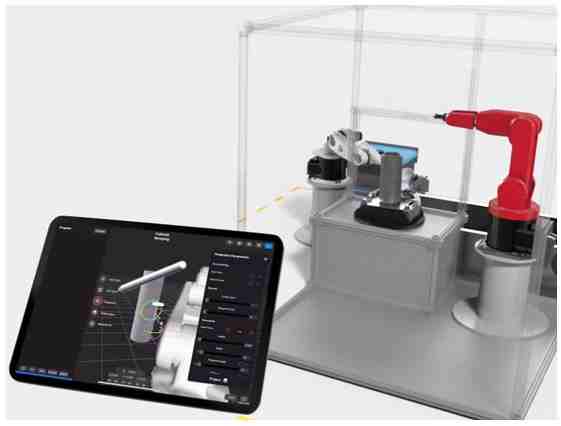

Conventional ways to program the movement of a robot arm, such as using low code graphical methods or the drag teach method, might soon have to make way for smarter methods: programing a robot arm with digital twin simulation.
In early June, at the Singapore Asia Tech X Singapore exhibition (ATxSG) organized by Singapore Infocomm Media Development Authority (IMDA) and Informa Tech, the exhibit from a robotic platform company, Augmentus, gave me a better picture on what would be a possible end user experience be like when using a digital twin method for a specific operation such as spraying and coating. ATxSG is Asia’s flagship tech event, and this year the focus is on topics, such as AI, 5G, technology, and digital innovations across multiple domains.
In Augmentus’s solution, a digital twin of the workstation comprising of a work item is generated using 3D scanners. A user can do this by capturing the 3D environment using a smart device with imaging capabilities while moving around the workstation. With additional information provided by the user regarding the robot being used, the robot simulation environment comprising the digital twin of the workstation is generated by Augmentus’s platform.
To program the robot arm movement, a user specifies an area on the work item to define a region where the robot arm would be performing its operation on. An Auto-Toolpath Generation program (ATG) then automatically generates an optimized robot movement by populating several waypoints on this area, which can be edited by the user on a tablet easily using a touch-pen.

This method can be advantageous to program a robot arm operation on an item with irregular or curvy surfaces. For items with flat surfaces, the user can choose a suitable type of movement from a template library of pre-programmed movement. Prior to the deployment of the robot arm, the movement of the robot arm can be simulated and played for the end user to validate. According to Augmentus, their no code solution can reduce engineering costs up to 73% and speed up the programing process by 21 times.

